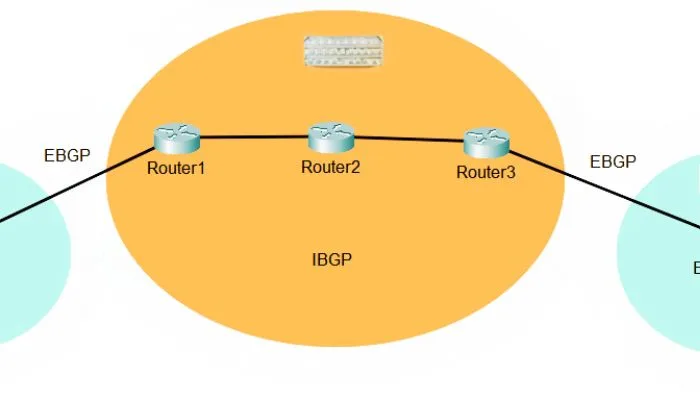In the ever-evolving landscape of computer networking, BGP (Border Gateway Protocol) plays a crucial role in ensuring data packets find their way across the internet efficiently. Among its variations, iBGP (Internal BGP) stands out as a fundamental component of network infrastructure.
What is iBGP?
iBGP is an interior gateway protocol widely used by network administrators to exchange routing information between routers within the same AS. It enables routers within the AS to learn about external routes and efficiently distribute them to other routers within the same AS.
How does iBGP Work?
iBGP relies on an entire mesh topology, where each router within the AS establishes a direct peering relationship with every other router. This ensures that all routers in the AS have complete knowledge of the external routes learned by any router within the AS.
When a router in the AS learns an external route through eBGP, it shares that information with other routers in the AS using iBGP. This allows all routers to have consistent routing tables and make optimal forwarding decisions.

In an iBGP environment, routers establish peer connections with other routers within the same AS. These peer connections enable the exchange of BGP messages, allowing routers to update their routing tables. When a router receives a BGP update from one of its peers, it evaluates the information and determines the best path to reach a specific network destination.
To prevent routing loops and ensure efficient path selection, iBGP networks often employ route reflection. Route reflection allows certain routers, known as route reflectors, to act as intermediaries between other routers, simplifying the BGP topology. This strategy reduces the complexity of iBGP configurations and enhances network scalability.
Use Cases of iBGP
iBGP is used in various scenarios to enhance routing efficiency and provide redundancy. Some of the common use cases include:
- Load Balancing: iBGP allows for load balancing by distributing traffic across multiple paths. This helps in optimizing network utilization and avoiding congestion on a single path.
- Redundancy and High Availability: iBGP provides redundancy by allowing routers to have multiple paths to reach a destination. If one path fails, routers can quickly switch to an alternative path, ensuring continuous connectivity.
- Route Reflectors: In large-scale networks with a high number of routers, iBGP route reflectors are used to reduce the number of iBGP peering sessions. Route reflectors act as centralized points where routers exchange routing information, simplifying the overall network design.
iBGP vs eBGP
In an iBGP network, routers within the same Autonomous System exchange routing information with one another. In contrast, eBGP is crucial for linking networks that are under distinct administrative authority as it handles external routing between various Autonomous Systems. Administrators of complicated networks must have a firm grasp of the differences between various protocols in order to do their jobs effectively.
While both iBGP and eBGP are BGP protocols used for routing, there are some key differences between the two:
| Aspect | iBGP (Internal BGP) | eBGP (External BGP) |
|---|---|---|
| Scope | Operates within a single Autonomous System (AS). | Operates between different Autonomous Systems (ASes). |
| Peering | Routers form peer connections with other routers within the same AS. | Routers establish peering with routers in different ASes, often under different administrative control. |
| Path Selection | Prefers routes with shorter Autonomous System Paths (AS_PATHs), prioritizing internal paths within the same AS. | Selects routes primarily based on the shortest AS_PATH, favoring external paths leading outside the current AS. |
| Use Cases | – Facilitates internal routing within an AS. – Used for exchanging routing information between routers within the same AS. | – Facilitates external routing between different ASes. – Connects networks that may be under separate administrative control. |
iBGP and eBGP are two variants of the Border Gateway Protocol (BGP) with distinct scopes and purposes. iBGP is used for internal routing within a single Autonomous System, while eBGP handles external routing between different Autonomous Systems, often connecting networks with different administrative control. Understanding these differences is essential for effectively managing network infrastructures.
iBGP plays a critical role in ensuring efficient routing within an Autonomous System. By allowing routers to exchange routing information and distribute it to other routers within the same AS, iBGP enables load balancing, redundancy, and high availability. Understanding the differences between iBGP and eBGP is essential for network administrators to design robust and scalable networks.


